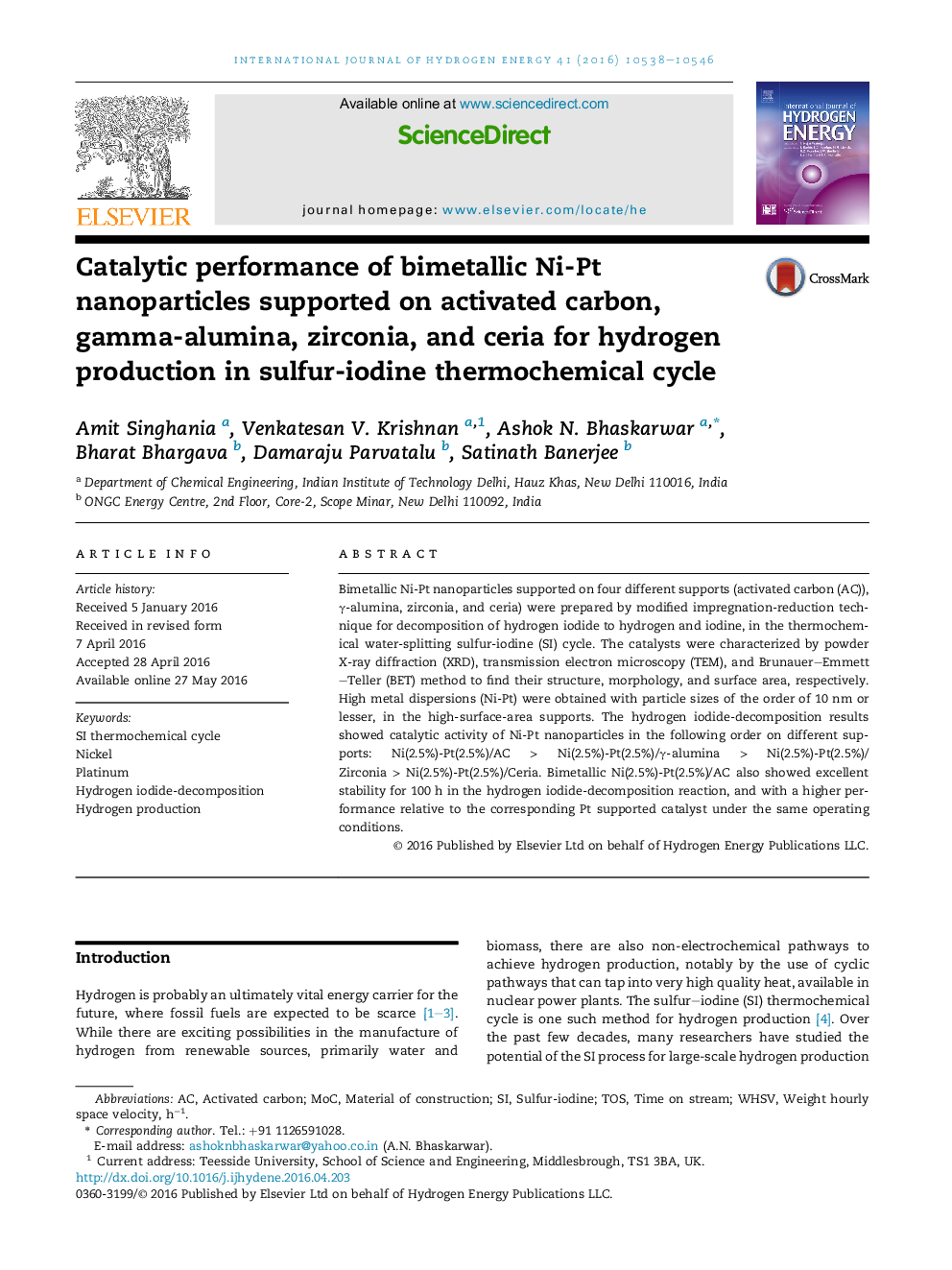| کد مقاله | کد نشریه | سال انتشار | مقاله انگلیسی | نسخه تمام متن |
|---|---|---|---|---|
| 1276779 | 1497400 | 2016 | 9 صفحه PDF | دانلود رایگان |

• Ni-Pt nanoparticles are deposited on different supports by modified impregnation-reduction method.
• Less than 10 nm Ni-Pt particles are achieved.
• Ni-Pt nanoparticles investigate for hydrogen iodide decomposition.
• Ni-Pt/AC show excellent activity and stability for 100 h.
Bimetallic Ni-Pt nanoparticles supported on four different supports (activated carbon (AC)), γ-alumina, zirconia, and ceria) were prepared by modified impregnation-reduction technique for decomposition of hydrogen iodide to hydrogen and iodine, in the thermochemical water-splitting sulfur-iodine (SI) cycle. The catalysts were characterized by powder X-ray diffraction (XRD), transmission electron microscopy (TEM), and Brunauer–Emmett–Teller (BET) method to find their structure, morphology, and surface area, respectively. High metal dispersions (Ni-Pt) were obtained with particle sizes of the order of 10 nm or lesser, in the high-surface-area supports. The hydrogen iodide-decomposition results showed catalytic activity of Ni-Pt nanoparticles in the following order on different supports: Ni(2.5%)-Pt(2.5%)/AC > Ni(2.5%)-Pt(2.5%)/γ-alumina > Ni(2.5%)-Pt(2.5%)/Zirconia > Ni(2.5%)-Pt(2.5%)/Ceria. Bimetallic Ni(2.5%)-Pt(2.5%)/AC also showed excellent stability for 100 h in the hydrogen iodide-decomposition reaction, and with a higher performance relative to the corresponding Pt supported catalyst under the same operating conditions.
Journal: International Journal of Hydrogen Energy - Volume 41, Issue 25, 6 July 2016, Pages 10538–10546